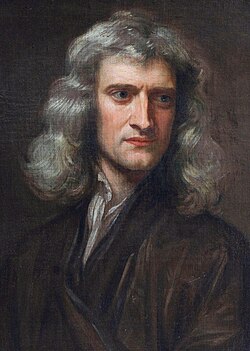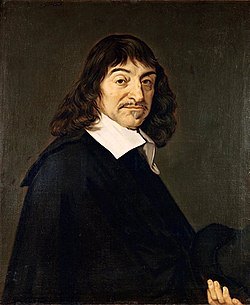Isaac Newton

Cambridge University physicist and mathematician Sir Isaac Newton (1642–1727) was a fellow of the Royal Society of England, who created a single system for describing the workings of the universe. Newton formulated three laws of motion which formulated the relationship between motion and objects and also the law of universal gravitation, the latter of which could be used to explain the behavior not only of falling bodies on the earth but also planets and other celestial bodies. To arrive at his results, Newton invented one form of an entirely new branch of mathematics: calculus (also invented independently by Gottfried Leibniz), which was to become an essential tool in much of the later development in most branches of physics. Newton's findings were set forth in his Philosophiæ Naturalis Principia Mathematica ("Mathematical Principles of Natural Philosophy"), the publication of which in 1687 marked the beginning of the modern period of mechanics and astronomy.
Newton refuted the Cartesian mechanical tradition that all motions should be explained with respect to the immediate force exerted by corpuscles. Using his three laws of motion and law of universal gravitation, Newton removed the idea that objects followed paths determined by natural shapes and instead demonstrated that all the future motions of any body could be deduced mathematically based on knowledge of their existing motion, their mass, and the forces acting upon them. However, observed celestial motions did not precisely conform to a Newtonian treatment, and Newton, who was also deeply interested in theology, imagined that God intervened to ensure the continued stability of the solar system.

Newton's principles (but not his mathematical treatments) proved controversial with Continental philosophers, who found his lack of metaphysical explanation for movement and gravitation philosophically unacceptable. Beginning around 1700, a bitter rift opened between the Continental and British philosophical traditions, which were stoked by heated, ongoing, and viciously personal disputes between the followers of Newton and Leibniz concerning priority over the analytical techniques of calculus, which each had developed independently. Initially, the Cartesian and Leibnizian traditions prevailed on the Continent (leading to the dominance of the Leibnizian calculus notation everywhere except Britain). Newton himself remained privately disturbed at the lack of a philosophical understanding of gravitation while insisting in his writings that none was necessary to infer its reality. As the 18th century progressed, Continental natural philosophers increasingly accepted the Newtonians' willingness to forgo ontological metaphysical explanations for mathematically described motions.[57][58][59]
Newton built the first functioning reflecting telescope[60] and developed a theory of color, published in Opticks, based on the observation that a prism decomposes white light into the many colours forming the visible spectrum. While Newton explained light as being composed of tiny particles, a rival theory of light which explained its behavior in terms of waves was presented in 1690 by Christiaan Huygens. However, the belief in the mechanistic philosophy coupled with Newton's reputation meant that the wave theory saw relatively little support until the 19th century. Newton also formulated an empirical law of cooling, studied the speed of sound, investigated power series, demonstrated the generalised binomial theorem and developed a method for approximating the roots of a function. His work on infinite series was inspired by Simon Stevin's decimals.[61] Most importantly, Newton showed that the motions of objects on Earth and of celestial bodies are governed by the same set of natural laws, which were neither capricious nor malevolent. By demonstrating the consistency between Kepler's laws of planetary motion and his own theory of gravitation, Newton also removed the last doubts about heliocentrism. By bringing together all the ideas set forth during the Scientific Revolution, Newton effectively established the foundation for modern society in mathematics and science.


